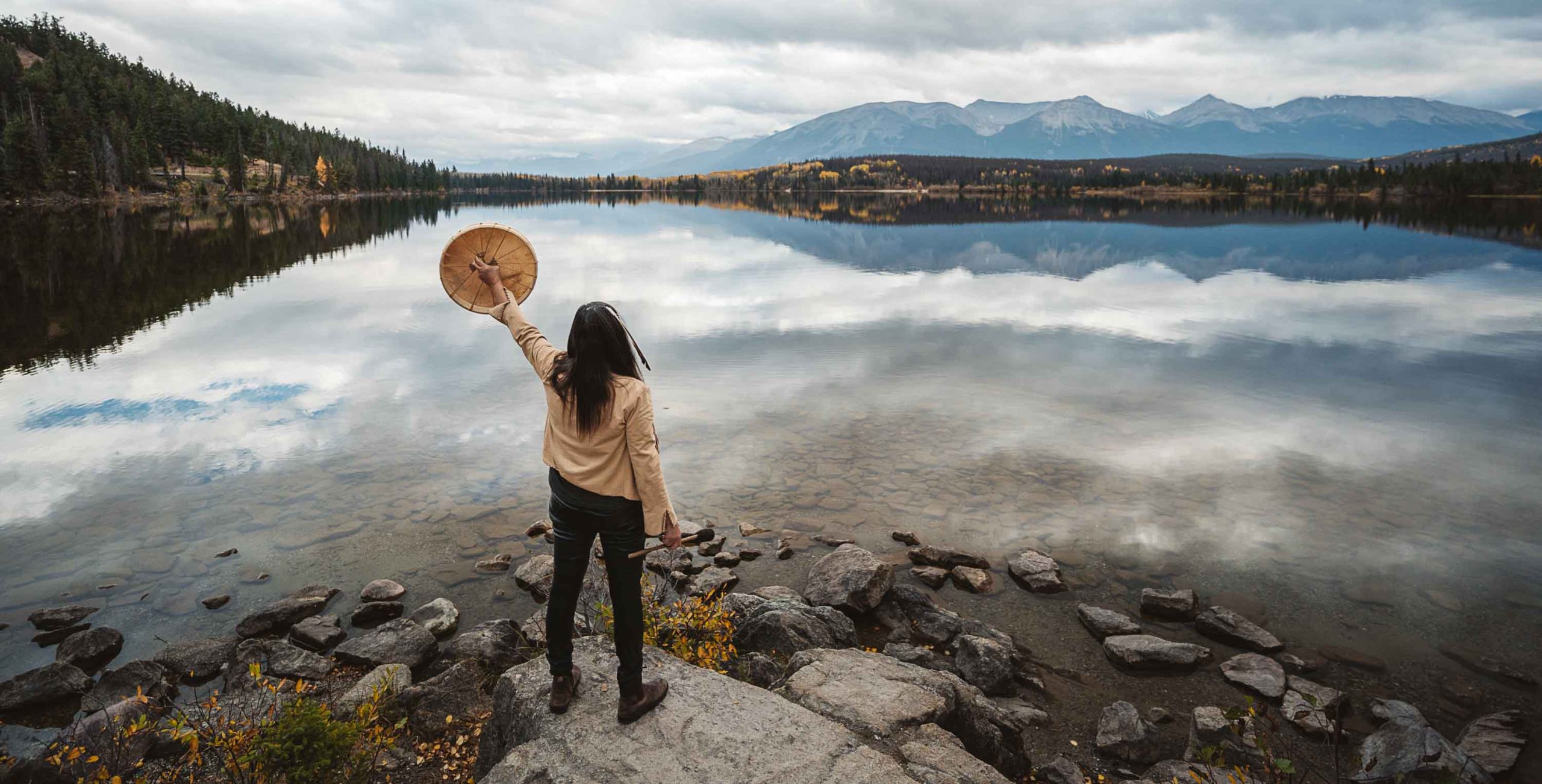These questions tug at me when we set out the next morning, first stopping by a stream of icy, glacial water that is feeding the hungry but still partially frozen tarn that’s tucked below the ridgeline we are about to scale.
Patterson begins our day of climbing with a blessing. He straddles the rushing water and murmurs a prayer; I don’t understand the language, but I can sense its sacred strength. The prayer is an acknowledgement. Patterson wants all the surrounding land to recognize his voice. “I thanked [the water] for my life, for what I’m doing, and I asked permission to be here,” he tells me.
When I kneel, to give my own acknowledgement—to truly feel the bite of that glacial water, the downy tendrils of waving moss, and the smooth surface of the stones—I begin to recognize an intimacy in my actions, an acceptance that, as Ebe told me, I belong to the land, it doesn’t belong to me.
When, hours later, it becomes clear that the comfort level of the group will prevent us from summiting, I recall that feeling. I remind myself that this is the first uncomfortable step to refocusing the lens in which I view nature; to remember that I am not here to approach the land from a place of consumption, but from a place of humility. In this moment, instead of pushing forward with my wants and desires, I need to simply find peace in the process. To be present in this sacred space, even if it doesn’t look like I expected it to.
I turn around, away from the looming summit. I take a step. It’s a small step. But it’s a start.

